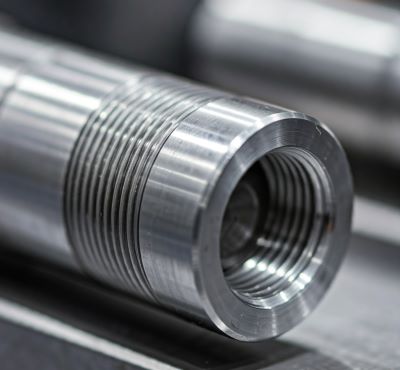These seemingly small components play a crucial role in ensuring the smooth and efficient operation of heavy machinery across various industries. From construction equipment to manufacturing processes, reliable fittings are essential for preventing leaks, maximizing performance, and minimizing downtime.
In this comprehensive guide, we’ll delve into the world of hydraulic cylinder fittings, exploring their types, selection criteria, installation techniques, and maintenance best practices.
What Are Hydraulic Cylinder Fittings?
Hydraulic cylinder fittings are crucial components that connect hoses and pipes to the cylinder, ensuring a reliable and leak-free hydraulic system. These fittings come in various types, each designed for specific applications and pressure ratings.
Why Fittings Are Essential for Hydraulic System Performance
➡️ Leak Prevention: High-quality fittings minimize fluid leakage, preserving system efficiency and preventing potential hazards.
➡️ Durability: Well-chosen fittings withstand harsh environments and high pressures, ensuring long-lasting performance.
➡️ Ease of Assembly and Maintenance: Proper fittings simplify installation and maintenance procedures.
Types of Hydraulic Cylinder Fittings: Choosing the Right Fit
➡ Versatile for a wide range of applications.
➡ Easy to install and disassemble.
➡ Suitable for lower-pressure systems.
➡ Excellent sealing capabilities, preventing leaks.
➡ Widely used in high-pressure applications.
➡ Require careful assembly to ensure proper sealing.
➡️ Flare Fittings:
➡ Reliable and durable for high-pressure connections.
➡ Require precise flaring techniques for optimal performance.
➡ Designed for specific applications, such as swivel fittings, bulkhead fittings, and quick-connect couplings.
Key Factors to Consider When Selecting Fittings
➡️ Material Choices:
➡ Stainless steel: Corrosion-resistant and durable.
➡ Brass: Cost-effective and suitable for lower-pressure applications.
➡ Other materials like carbon steel or aluminum may be used based on specific requirements.
➡️ Size and Compatibility: Ensure proper fit and compatibility with hoses and pipes.
➡️ Pressure Ratings: Select fittings that can withstand the maximum operating pressure of the system.
➡️ Corrosion Resistance: Choose fittings that are resistant to corrosion, especially in harsh environments.
Installation Tips for Reliable Hydraulic Cylinder Fittings
➡️ Prepare the Cylinder: Clean the threads and ensure a smooth surface for proper sealing.
➡️ Use the Right Tools: Employ appropriate wrenches and thread sealants to prevent leaks.
➡️ Avoid Over-Tightening: Excessive torque can damage the fittings and the cylinder.
➡️ Inspect for Leaks: After installation, carefully check for any signs of leakage.
Common Issues and How to Troubleshoot Hydraulic Fittings
➡️ Leakage: Identify the source of the leak and tighten or replace the faulty fitting.
➡️ Pressure Drops: Check for restrictions in the fittings or hoses.
➡️ Misalignment: Correct any misalignment to ensure proper sealing.
➡️ Loose Seals: Tighten the fittings, but avoid over-tightening.
Maintenance Best Practices for Hydraulic Cylinder Fittings
➡️ Regular Inspection: Visually inspect fittings for damage, corrosion, or leaks.
➡️ Cleaning and Lubrication: Clean fittings regularly to remove dirt and debris.
➡️ Replacement: Replace worn or damaged fittings promptly to prevent failures.
Top Industries Relying on Hydraulic Cylinder Fittings
➡️ Heavy Machinery and Construction: Excavators, cranes, and bulldozers.
➡️ Automotive and Aerospace: Manufacturing and assembly processes.
➡️ Industrial Manufacturing: Machinery and equipment in various industries.
Check out these resources ⬇️⬇️⬇️
Swedge Fitting Explained: Get Stronger, Tighter Seals Fast
Why the Right Elbow for Hydraulic Ram Matters
Conclusion: Selecting Quality Fittings for Optimal Performance
By understanding the different types of hydraulic cylinder fittings and following best practices, you can ensure the reliability and efficiency of your hydraulic systems. Invest in high-quality fittings from reputable manufacturers to minimize downtime and maximize productivity.
Post time: Nov-01-2024


